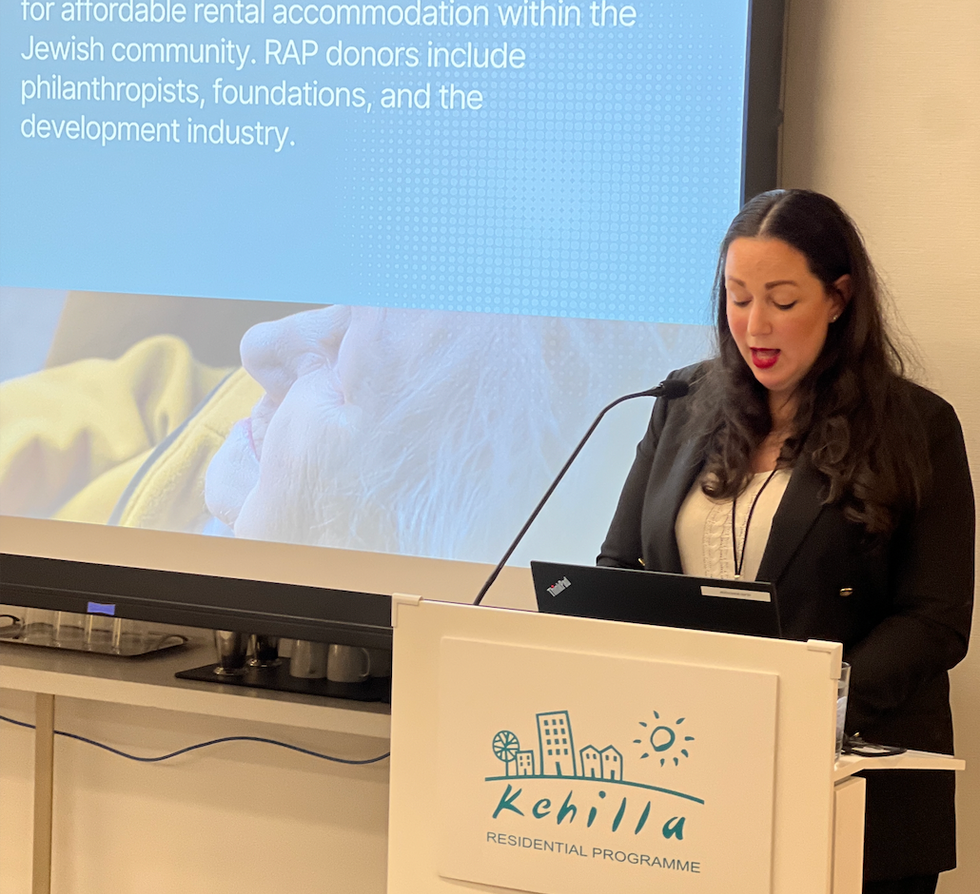Infra
Ana Bailão On Affordable Housing Strategies For Toronto

On Thursday night, former-Deputy Mayor and Head of Affordable Housing and Public Affairs for Dream Unlimited, Ana Bailão, sat down with Architect and Urban Planner at Smart Density, Naama Blonder,to discuss various strategies for tackling the City’s affordable housing shortage.
Hosted by Kehilla Residential Programme, a not-for-profit organization that champions affordable housing initiatives that respond to the needs of the Jewish community in the GTA, the night delved into who affordable housing in Toronto is for, different models for getting affordable housing built, and the current forces limiting housing development as a whole.
Amid the housing crisis, access to affordable housing in Toronto continues to be a central issue for many Torontonians as governments, non-profits, and the private sector work to realize effective housing solutions. But there is still much to be done.
Housing Affordability Needs In Toronto
On any given night, there are an estimated 12,000 people experiencing homelessness in the City, according to the social service non-profit Fred Victor. But increasingly, those in the “middle class” are turning to affordable housing options under the weight of the housing affordability crisis.
“Affordability is a continuum. Somebody who makes $19,000 has a different level of affordability than a family making $60,000, but it doesn’t mean that both of them don’t have affordability issues in an expensive city like Toronto,” said Bailão. “Unfortunately, today, we are dealing with a continuum that starts all the way from shelters and supportive housing to actually having to create opportunities for families that make $100,000 or $120,000 a year.”
Given the wide range of individuals and families grappling with the housing crisis, Bailão emphasized the need for a wider range of models for developing affordable housing.
Utilizing Creative Development Models
Bailão discussed some of the creative affordable housing models she and her team at Dream Unlimited have utilized in their developments. At their West Don Lands project, developed with Tricon Residential and Kilmer Group, for example, one in four units are affordable. That development exists on private lands and Dream owns all the units, half of which were awarded through a City of Toronto lottery, and the other half of which came from reference agreements with seven non-profits.
In another multifaceted model, an Ottawa affordable development of theirs is breaking ground on federal land purchased by Dream through the National Capital Commission (NCC), which will provide 41% affordable housing. In that model, Dream partnered with a non-profit that will own 20% of the finished building and manage 100% of the affordable units using funding from Dream to be supplied for 20 years. By partnering with a non-profit, they were able to bring the rent down to 59% of the average market rate. Dream owns another 21% of the affordable units, and the rest will be market units.
“It’s a great model because that non-profit has just a bit over 300 units, and with this development we’re going to add over 130 units to their portfolio, creating a huge capacity,” said Bailão. “For the non-profits, one of the issues they have is the predevelopment costs, which we did, so that was a huge help for them.”
She also touched on the highly-anticipated Quayside development, which they will be building on City-owned land, but the mortgage will be held by a non-profit who will also operate the building.
“With the conditions that we have today, every site is a site, and every opportunity is an opportunity,” said Bailão. “The most important ingredients for creating affordable housing are partnerships, stacking of programs, and being nimble.”
Enhanced Government Coordination & Remedying Cost To Build
But Bailão also highlighted the fact that creative solutions are required at all levels. “The most important thing that I think is missing still is the coordination between governments,” said Bailão. “All of them have acknowledged that this is a crisis that they need to tackle, but coordinating all the programs and having a very targeted approach, I think we still have a long way to go with.”
The other factor she believes is putting additional pressure on affordable housing is the cost to build. “The whole concept about growth paying for growth needs to be reimagined because I don’t think we can continue to put the cost of infrastructure and the cost of growth on the backs of new homeowners and new renters,” said Bailão. “I think it’s time that this infrastructure starts getting paid for by more progressive forms of taxation other than development charges.”
The night’s discussion fuelled an engaging Q&A session which highlighted a number of ongoing issues, from Toronto’s stalled condo market to NIMBYism and inadequate zoning reform. But a common thread throughout was the need for more imaginative policies and models for developing affordable housing.
“Along the continuum, there are solutions that all governments need to be tackling, and I think in my opinion, doing a bit different,” said Bailão. “We’re not going to build our way out of this and we’re not going to finance our way out of this.”
The Event
Attendees

Brenda Izen, Kehilla Member and Principal of Izen Architecture Inc.

Naama Blonder and Ana Bailão

From left to right: David Gasch, Adam Cohen, Brenda Izen, Ana Bailao, Naama Blonder, and Lisa Lipowitz

Ana Bailão
Photography by The Shutterb Team








